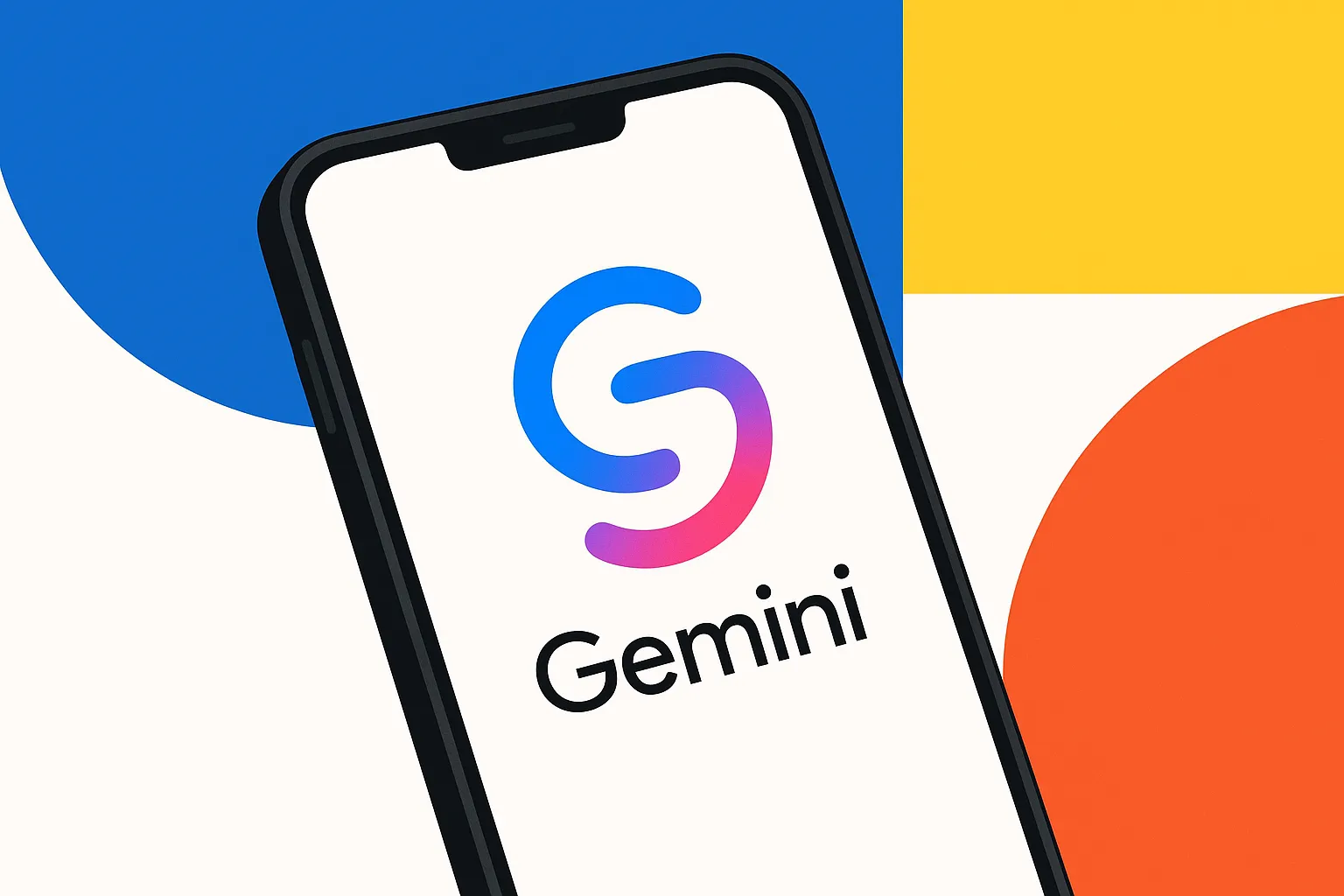Business Model of Google Gemini is Google’s flagship generative AI assistant and chatbot, designed to compete with tools like ChatGPT. It helps users with tasks such as answering questions, summarizing content, drafting emails, and writing code.Its business model is worth studying because Gemini doesn’t just represent a single app—it’s an entire platform strategy for embedding AI across Google’s suite of products. This integration of advanced language models into everyday workflows shows how big tech monetizes AI at scale, blending free access with premium upsells and enterprise licensing.
With the rapid adoption of generative AI, Google Gemini has become a cornerstone of Google’s strategy to stay ahead in search, productivity, and cloud services. By seamlessly embedding AI assistance into Gmail, Docs, Android, and developer tools, Gemini is transforming how individuals and enterprises work. Studying its business model of Google Gemini offers valuable lessons for founders aiming to build scalable, subscription-driven AI products that blend free engagement with high-value paid features.
What is Google Gemini & How It Works
Google Gemini is an advanced conversational AI platform that builds on Google’s large language models (LLMs), including Gemini 1.5 Pro. Launched in 2023 as the evolution of Bard, Gemini combines search, content generation, and productivity tools into a single experience.
What Problem Does It Solve?
- Helps users access information instantly without having to search manually.
- Drafts and summarizes content, saving time for professionals and students.
- Integrates AI assistance into Google Workspace tools like Docs, Gmail, and Sheets.
Who Uses It?
- Everyday consumers who want an AI assistant for quick questions.
- Businesses that need AI-powered workflows.
- Developers who embed Gemini into their own apps through APIs.
How Does the App work Operate?
- Gemini is available via web, Android, and iOS.
- Users can ask questions, upload files, or connect their Google Workspace.
- The AI model processes queries, generates responses, and pulls in live Google Search data when relevant.
- Premium features are offered through the Google One subscription.
Read More : What Is a Google Gemini App and How Does It Work?
Target Audience Driving Gemini Growth
Google Gemini appeals to a broad spectrum of users, but its business model revolves around a few primary customer segments:
1. Everyday Consumers
- Individuals using Gemini for personal productivity, learning, and entertainment.
- People looking for instant answers, writing assistance, and creative inspiration.
2. Knowledge Workers & Professionals
- Employees leveraging Gemini to draft emails, prepare presentations, or analyze data.
- Freelancers and consultants who need quick content creation and research support.
3. Enterprise & Business Customers
- Organizations integrating Gemini into workflows via Google Workspace.
- Teams adopting Gemini for internal knowledge management and customer support.
4. Developers & Startups
- Product teams embedding Gemini’s APIs into their own SaaS tools and apps.
- Innovators building new products around Google’s AI capabilities.
This diverse audience allows Google to blend freemium access with premium and enterprise offerings—maximizing reach and revenue potential.
Features that Support the Business Model
Google Gemini’s success is driven by features designed to create value, encourage engagement, and unlock monetization opportunities. Here are the core features fueling its business model:
1. Conversational Chat Interface
- A clean, intuitive interface for interacting with the AI.
- Keeps users engaged and returning regularly.
2. Real-Time Google Search Integration
- Gemini pulls live information from Google Search.
- This increases accuracy and strengthens Google’s core search ecosystem.
3. Workspace Integration
- Gemini is embedded in Gmail, Docs, Sheets, and other apps.
- Premium capabilities, like advanced writing assistance, drive subscription upgrades.
4. File and Image Uploads
- Users can upload documents and images for analysis or summarization.
- Supports more advanced use cases, especially for professionals.
5. Coding Assistance
- Gemini helps developers generate, debug, and explain code.
- Attracts technical audiences willing to pay for productivity gains.
6. Multimodal Capabilities
- Beyond text, Gemini can interpret images and complex queries.
- Differentiates it from simpler AI chatbots.
7. API & Gemini Apps
- Developers can integrate Gemini via APIs and build custom apps.
- Expands monetization through consumption-based billing.
These features form the backbone of Google’s approach to combining free access, upsells, and enterprise licensing.
Read more : Best Google Gemini Clone Scripts in 2025: Features & Pricing Compared
Revenue Streams of Google Gemini
Google Gemini is built on a multi-layered revenue model that blends freemium access, subscriptions, and enterprise sales. Below is a clear overview of how each stream contributes to the bottom line:
| Revenue Stream | How It Works |
| Freemium Model | Free access to basic AI features to attract mass adoption and grow the user base. |
| Google One AI Premium Plan | Paid subscription offering advanced Gemini capabilities inside Gmail, Docs, and more ($19.99/month). |
| Enterprise Licensing | Large businesses pay for Gemini integrations across teams and secure environments. |
| API Consumption Billing | Developers pay based on usage of Gemini APIs in their apps and services. |
| Upselling Workspace Subscriptions | Gemini drives adoption of higher-tier Google Workspace plans. |
| Data Insights & Advertising | Gemini usage enriches Google’s understanding of user intent, indirectly boosting ad relevance. |
Highlights:
- Freemium Access builds a massive funnel.
- AI Premium converts power users into subscribers.
- Enterprise Plans unlock recurring high-value contracts.
- API Billing scales with developer adoption.
This hybrid approach ensures Gemini generates revenue from individuals, teams, and entire organizations.
Read more : Revenue Model of Google Gemini: How Google’s AI Powerhouse Makes Money
Cost Structure of Gemini Platform
Running Google Gemini at scale involves substantial investments across technology, infrastructure, and compliance. Here are the primary cost drivers behind its business model:
1. Model Training and R&D
Developing Gemini’s language models demands heavy research investment.
- Continuous fine-tuning keeps responses accurate.
- Safety testing ensures compliance and reliability.
2. Cloud Infrastructure
Running Gemini requires massive cloud computing power.
- GPU clusters process billions of queries.
- Storage costs grow with user data volume.
3. Engineering and Product Teams
Skilled teams build features and maintain operations.
- Engineers develop integrations and APIs.
- Product managers oversee user experience improvements.
4. Customer Support
Supporting users adds significant operational expenses.
- Enterprise clients need dedicated account management.
- Helpdesk teams resolve technical issues quickly.
5. Compliance and Data Privacy
Gemini must meet strict data protection standards.
- Global regulations like GDPR drive costs.
- Regular audits ensure user trust and legal safety.
6. Marketing and Adoption
Promoting Gemini requires ongoing marketing campaigns.
- Awareness drives freemium and paid adoption.
- Discounts and trials help convert free users to subscribers.
2024–2025 Innovations or Updates
Google Gemini has evolved rapidly since launch, with several updates that impact how it generates revenue and supports users. Here are key innovations and changes to watch:
1. Gemini Advanced Launch
- Google introduced Gemini Advanced for subscribers, powered by Gemini 1.5 Pro.
- Offers longer context windows (up to 1 million tokens) for deeper analysis.
2. Tighter Workspace Integration
- Gemini has become more deeply embedded in Gmail, Docs, and Sheets.
- Paid subscribers can use AI to generate content and summarize documents directly inside their workflow.
3. Gemini Apps and Extensions
- Gemini now supports “custom apps” that let teams build tailored solutions on top of the AI.
- Expands the platform’s utility for enterprises.
4. Mobile Enhancements
- Gemini replaced Google Assistant on Android devices.
- This strategic shift brings conversational AI into daily smartphone use.
5. Updated Monetization
- The AI Premium Plan under Google One was standardized at $19.99/month.
- New trials and discounts encourage freemium users to convert.
6. Multimodal Capabilities
- Gemini continues rolling out image understanding and document uploads for more advanced scenarios.
These updates position Gemini as both a consumer-grade assistant and a serious enterprise productivity tool.
Read more : Pre-launch vs Post-launch Marketing for Google Gemini Clone Startups
Takeaways for Startup Founders
If you’re thinking about building an AI-powered app or platform, there’s a lot you can learn from the business model of Google Gemini. Here are some insights you should keep in mind:
1. Start with a Freemium Funnel
- Gemini shows the power of offering a free experience to attract a massive audience.
- Consider giving users free basic features while reserving advanced capabilities for paid tiers.
2. Monetize with Subscriptions and Usage-Based Pricing
- Combining flat-rate subscriptions (like AI Premium) with API consumption billing is an effective way to diversify revenue.
- This approach serves both individuals and businesses.
3. Embed AI Where Work Happens
- Gemini’s deep integration into Gmail, Docs, and Android increases daily engagement.
- For your app, look for touchpoints where AI can save time or add value within existing workflows.
4. Focus on Multimodal Experiences
- Supporting text, images, and documents makes your platform more versatile.
- Users expect tools that handle diverse content seamlessly.
5. Build for Enterprise from Day One
- Gemini’s enterprise licensing provides predictable, recurring revenue.
- Even if you start with consumers, plan for business-grade security and compliance early on.
At Miracuves, we help founders launch AI-powered apps inspired by proven models like Gemini. Whether you want a custom AI assistant or a ready-made clone to accelerate your go-to-market, our team has the experience to guide you from idea to execution.
Read more : Google Gemini Features List: What Creators and Startups Should Know
Conclusion :
Google Gemini has quickly become one of the most important examples of how to monetize conversational AI at scale. By blending freemium access, premium subscriptions, and enterprise licensing, Google has built a platform that generates revenue from nearly every type of user—individuals, teams, and developers alike.
If you’re planning to create an AI-powered product or a similar chatbot experience, studying Gemini’s business model can give you a clear blueprint for success. From subscription upsells to deep integration in daily workflows, the opportunities are enormous.
Ready to build your own AI app or Gemini-inspired platform?
Miracuves offers ready-made AI solutions and custom development to help you launch faster and grow sustainably. Let’s turn your vision into reality. Contact us today to get started.
FAQs
1. How does Google Gemini make money if most features are free?
Google Gemini earns revenue by offering an AI Premium subscription ($19.99/month), enterprise licensing for businesses, and pay-as-you-go API billing for developers. This mix of free access and paid upgrades helps monetize a broad user base efficiently.
2. Is Gemini replacing Google Assistant completely?
Yes. In 2024, Google began transitioning Android devices to Gemini as the default assistant. This move integrates generative AI into daily smartphone interactions, boosting user engagement and potential upsells.
3. What makes Gemini different from ChatGPT?
Gemini has tighter integration with Google Search, Workspace, and Android. While both platforms offer advanced language models, Gemini benefits from Google’s vast ecosystem of data and services.
4. Can startups build something similar to Gemini?
Absolutely. While replicating Google’s scale is challenging, many of Gemini’s core ideas—freemium access, subscription tiers, and API monetization—are achievable for startups. You can leverage existing AI models and frameworks to build your own solution faster.
5. How can Miracuves help me develop an AI assistant app?
Miracuves helps you build an AI assistant app with ready-made clone solutions based on proven business models. We also offer custom development tailored to your niche. From design to launch, our team supports you every step of the way.
Related Articles :








